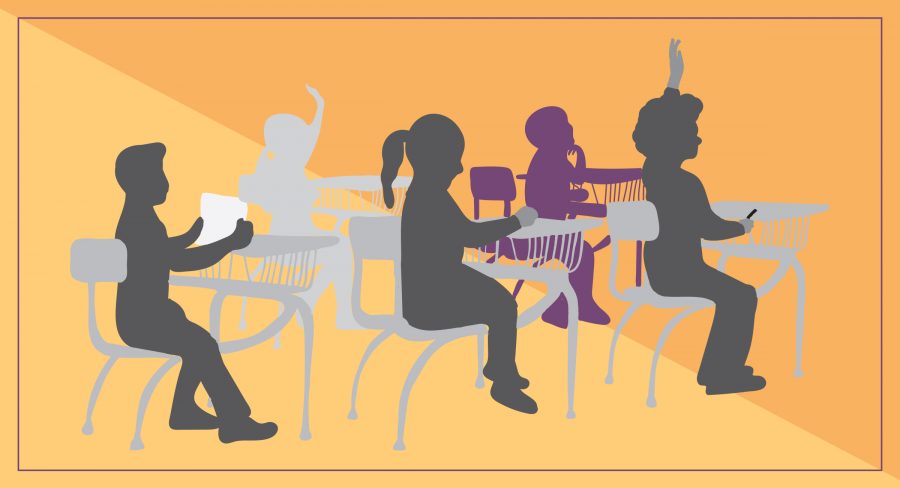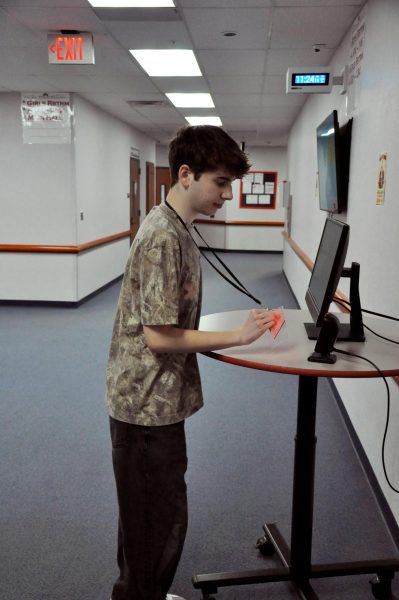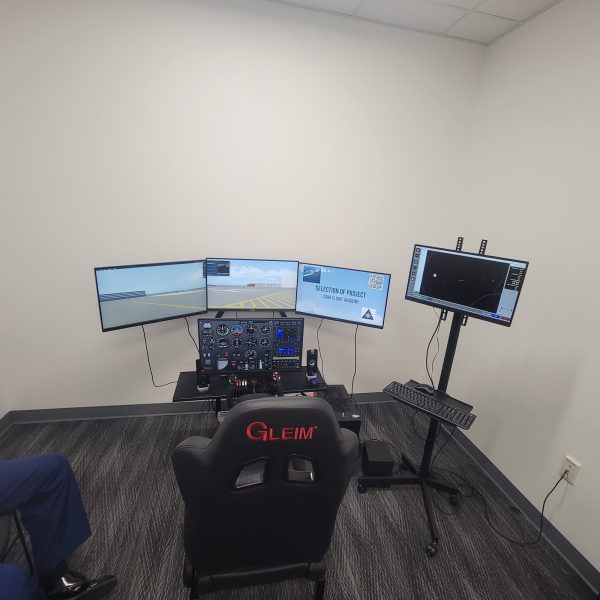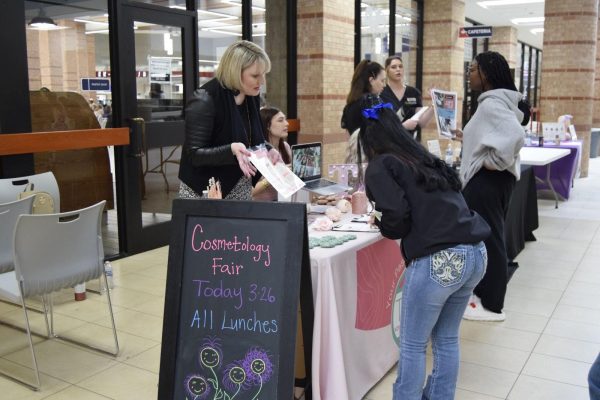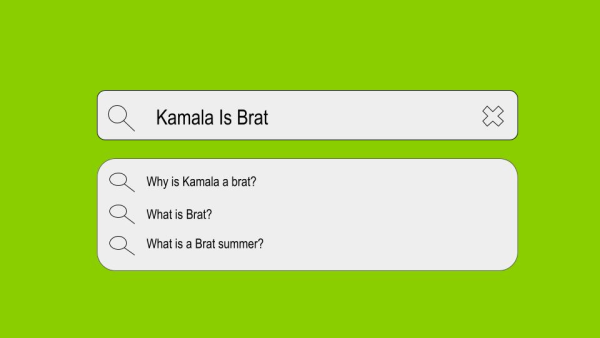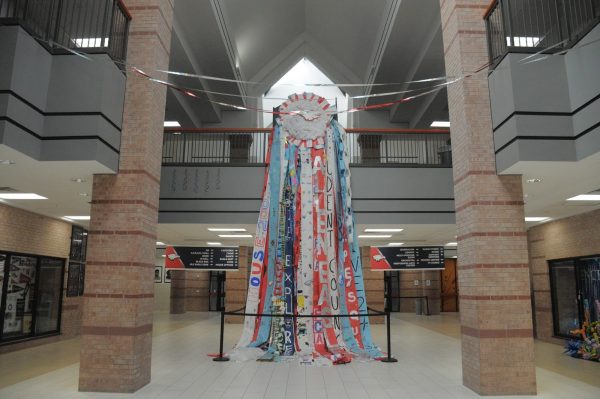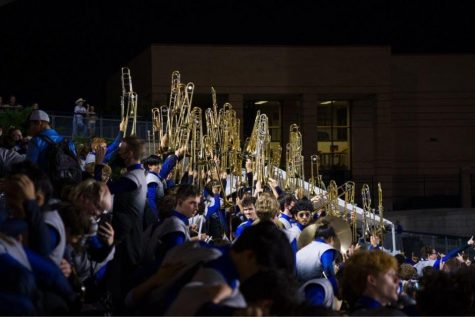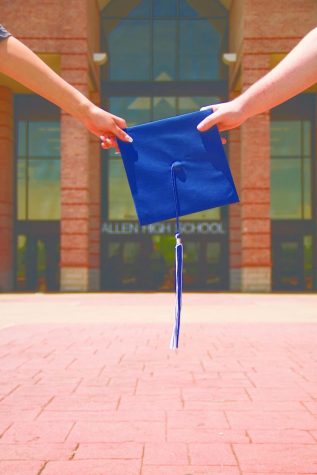Different, not less
In a school of more than 5,000 people, it would be hard to go anywhere on campus without finding a diverse student population. It’s clear that no single student is alike—they all have distinct backgrounds. They all have different beliefs. They all face different challenges. Some students are different because of physical or mental disabilities that can make their life more challenging, but that doesn’t mean they’re less of a student than anyone else. At Allen High School, there are many ways to ensure that all students feel accepted.
Accommodating and Accepting
Thirteen percent of public students nationwide, and about nine percent of students in the state of Texas are enrolled in special education. At Allen High School, the Special Education program serves 10 percent of students. That percentage consists of students with disabilities ranging from minor behavioral or social disabilities to more significant challenges.
“A lot of times when people think about special ed, they’re thinking about the students that you can notice have a disability, which is a small population of what we actually have here,” Allen High School Support Services administrator Brian Neely said. “It’s important to understand that when you’re talking about special education, it mostly consists of students with disabilities that aren’t as noticeable.”
These disabilities are things such as reading disabilities, math calculation disabilities, attention issues, social or emotional issues. They may not be as noticeable, but they still have an impact on many students’ lives.
“In most of your classrooms, there’s probably at least one kid who’s in special education and you have no idea, and you may never know,” Neely said. “That’s why I think it’s important to never judge a book by its cover.”
According to the its mission statement, the Allen ISD Special Services program seeks to promote successful learning for all special education students through effective instructional level interventions, access to the general grade level curriculum and experience with appropriate life and career skills.
“We all have hurdles and challenges, and students with disabilities, theirs are just more geared to the academic and educational process,” Special Education Department Chair Cyndi Parent said.
The Support Services program manages all modifications and accommodations that are available on campus, such as having a handrail installed, getting extra time on a test, or sitting at the front of the class to reduce distractions. More significant disabilities allow for vocational and occupational preparation classes to help students become independent.
“We don’t water down education, that’s not what this is about: it’s about making things accessible,” special education paraprofessional Alex Mathis said. “It’s about bringing out all the characteristics needed and filling in those gaps that may exist due to disability. We want to help them be independent and accepted and be able to function as anybody would.”
According to Mickenzie Hatzenbuehler, senior and Best Buddies Vice President, the separation between the students in general education and the students in special education can cause some to look down on students with special needs.
“Something that most people don’t seem to realize is that these students are just normal teenagers,” Hatzenbuehler said. “[They’re] no different from you and me, no different from anyone in this school just because they have this disability.”
Simon, a sophomore in the Best Buddies program, enjoys spending his free time the same ways as many of his peers.
“In my free time, I just like to go on my phone and tweet or use Instagram,” Simon said. “Other times I go to the library and read. I especially like to just go home and nap or watch TV, as long as I’ve done my homework.”
Befriending and Supporting
Acceptance and support are not exclusive to staff and administration. From Partners PE, to Peer Coaching, to Best Buddies, or just being a friend, there’s a variety of ways that students can support and befriend their peers with special needs.
“I signed up as a Peer Coach in the sixth grade,” Hatzenbuehler said. “My original plan was to do it for just one year, but I had no idea I would fall in love with it.”
In programs like Peer Coaching and Partners PE, students are paired with their peers with special needs to help with schoolwork and physical education.
“You learn things better from your peers than you learn from your teachers any day,” special education teacher Tia McVey said.
In Peer Coaching, students can tutor and support during the school day as part of an actual class. Peer Coaches will join the students in one of their functional academics class or in one of their electives.
“In Peer Coaching, it’s mostly just bonding with them. It’s not just you sitting there and teaching them,” Hatzenbuehler said. “You want to build a friendship, and it’s really hard not to.”
In the Best Buddies organization, students are paired up with a student with special needs who they hang out and go to extracurricular events with. It allows them to build friendships outside of a school setting.
“My Best Buddy is pretty cool,” sophomore student Ashley said. “I like having her in my life. She’s my Best Buddy, but she’s also my friend.”
Students in Best Buddies create these friendships by hanging out at school-planned events as well as planning their own outings.
“My Best Buddy and I, we go and do stuff all the time,” Hatzenbuehler said. “We’ve gone to restaurants, we’ve gone to the movies, we’ve gone to sporting events, we’re constantly doing things. It’s just hanging out and being friends, and they just happen to have special needs.”
Partners PE is an organization similar to Peer Coaching, but it takes place during physical education class.
“A lot of people don’t even realize that we offer Partners PE,” said Jerry Best, coach for the Partners PE program. “It can be difficult to teach because of the wide range of disabilities, but it helps the students become more confident and learn how to deal with adversity.”
There isn’t a long list of prerequisites required to be a Peer Coach, PE Partner, or Best Buddy. It only requires students to have the willingness to work and be patient.
“I think everyone has the capacity to be able to do it, but it depends on if you’re willing to sacrifice your time and be patient,” Hatzenbuehler said. “You just need to be comfortable enough to step forward and say, ‘I like this, I want to do this, and I think I can do it.’”
Programs like these attract students for a variety of reasons, but according to Hatzenbuehler, many people join because they have someone in their life who has a disability.
“My youngest brother has autism, but he lives in West Virginia, so I never really got that chance to get to know him,” Hatzenbuehler said. “I signed up for peer coaching so I could get to know him in an alternative way.”
A “Win-Win” for All
According to Neely, students with special needs aren’t the only ones who benefit when it comes to friendships like these.
“You can learn so much from these guys and how they treat people with the compassion they have towards everybody else,” Neely said. “It’s a win-win for both.”
Hatzenbuehler said that students involved often learn a lot about themselves, and how to have a better outlook on life.
“They’ve taught me so much about myself and to not really stress the little things,” Hatzenbuehler said. “They’re not happy all the time, no one is, but even with everything they have to go through, their outlook is so positive–no matter what.”
Students with special needs are often underestimated or misperceived, said McVey.
“People tend to think it’s going to be scary or sad, but it’s really not, it’s actually amazing,” McVey said. “I know a kid who has Down Syndrome, and he doesn’t really talk much or communicate verbally, but he is so good at bowling that adult bowling leagues want him to play for them.”
Students who can’t join programs can still get to know their peers with special needs simply by reaching out and being friendly.
“When you see those guys walking in the hallway, just reach out and say hello to them,” Neely said.
According to Mathis, many students have had their lives significantly impacted by these programs.
“These are just some of the most compassionate and truly caring kids I’ve ever met, and you all get the chance to get exposed and work with them,” Mathis said. “We have senior Peer Coaches who spend all their off-periods here. Nobody’s making them do that; they would just rather be here than anywhere else, and I think that just speaks for itself.”
Hatzenbuehler said that she believes every student should take the opportunity to reach out to the special education community.
“If you have the time and you have the energy and it’s something that you might like, do it,” Hatzenbuehler said. “If you like it, you’ll probably fall in love with it.”
Working with the special education program has influenced students like Hatzenbuehler, who plans to be a special education teacher in the future.
“I love the saying ‘different not less,’ because it’s true; just like there are differences in races or religions, these kids are different,” Hatzenbuehler said. “Just because they’re different doesn’t mean they should be placed outside of everyone else.”
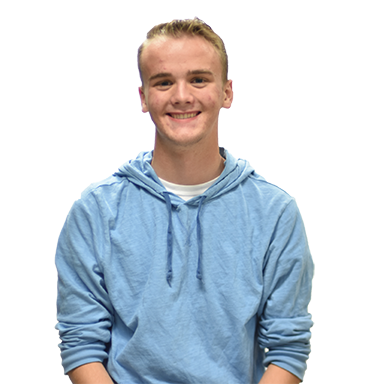
Senior Christian Hinton likes Twitter, comics and outer space. He plans to be the first person of Mars, but if that doesn't work out, he'll settle for...


